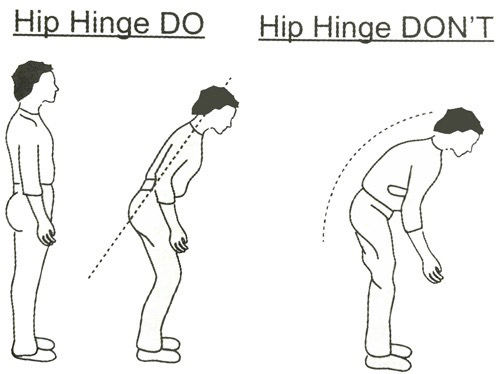With fall upon us and leaf raking becoming a probability, protection of the low back becomes even more vital. In the office, we focus on one of the fundamental principles of a hip hinge versus a back-bend. The hip hinge utilizes proper lifting and bending technique and can help us avoid a back injury.
As you can see in the photo below, the hinge point is the hip and not the low back. This technique requires proper hip, knee and ankle mobility. The majority of patients fail an evaluation in our office for proper lifting technique.

Support Your Back With a Lumbosacral Orthotic
Beyond correcting spinal subluxation and muscular deficiencies, we can use back bracing that can also aid in preventing injuries. The lumbosacral orthotic (back brace) is prescribed for individuals with degenerative changes that are at greater risk for back injuries. The lumbosacral orthotic decompresses the spine and stabilizes the spine at the same time.
 When using a lumbosacral orthotic, the patient is forced to use proper hip hinge when bending, lifting, and twisting. If you are the type of person that does not want to let back pain interfere with the way you live, a lumbosacral orthotic may be your answer. For example, my father is a contractor and found himself constantly injuring his back and subsequently was in my office more frequent.
When using a lumbosacral orthotic, the patient is forced to use proper hip hinge when bending, lifting, and twisting. If you are the type of person that does not want to let back pain interfere with the way you live, a lumbosacral orthotic may be your answer. For example, my father is a contractor and found himself constantly injuring his back and subsequently was in my office more frequent.
After using the lumbosacral orthotic for one month, he is able to work pain-free. He also has reported that his treatment in the office seems more effective. Also, the research shows that reliance on anti-inflammatory and pain medication is decreased with proper use of a lumbosacral orthotic.
Keep your back healthy and strong this season and beyond. Contact our practice today to book an appointment!
